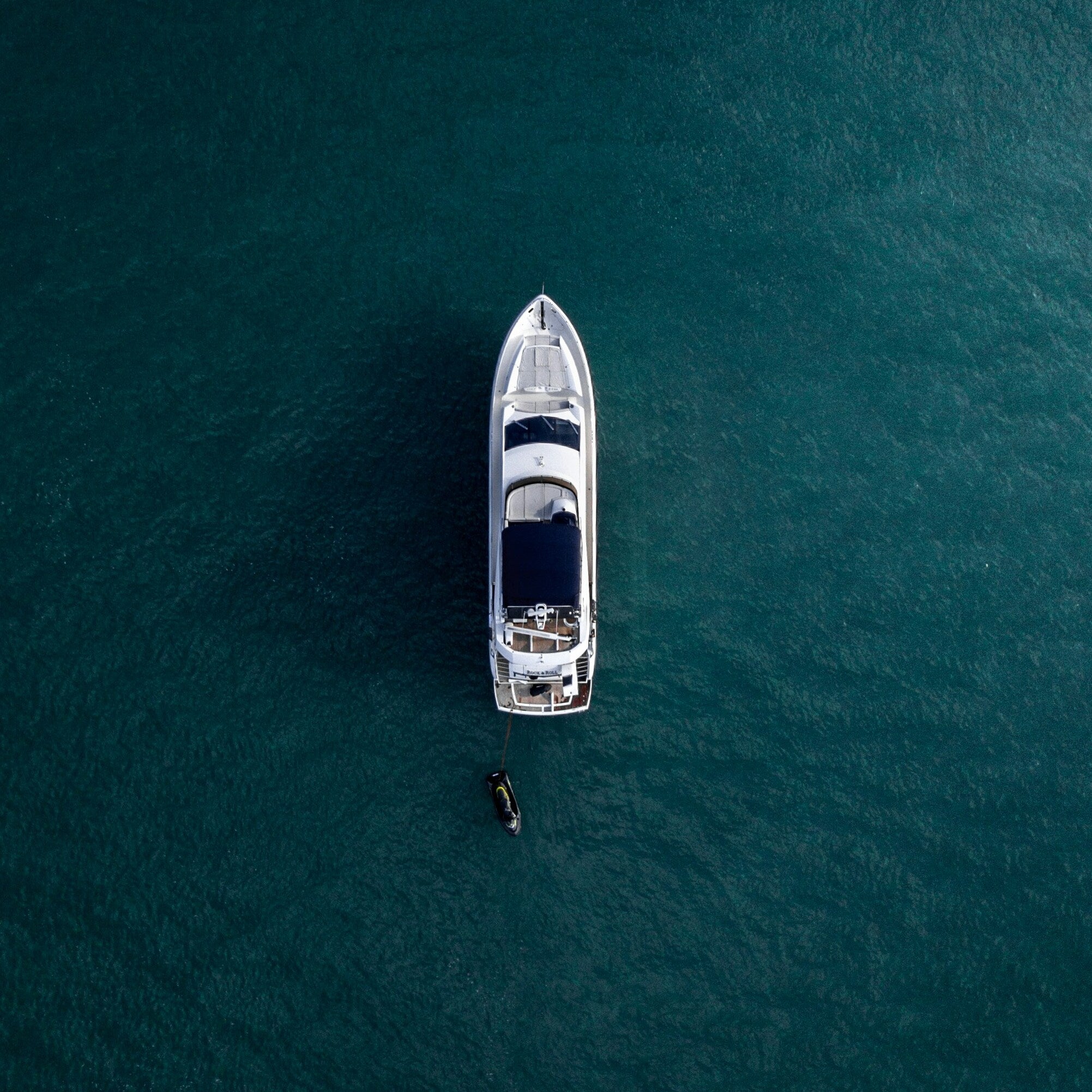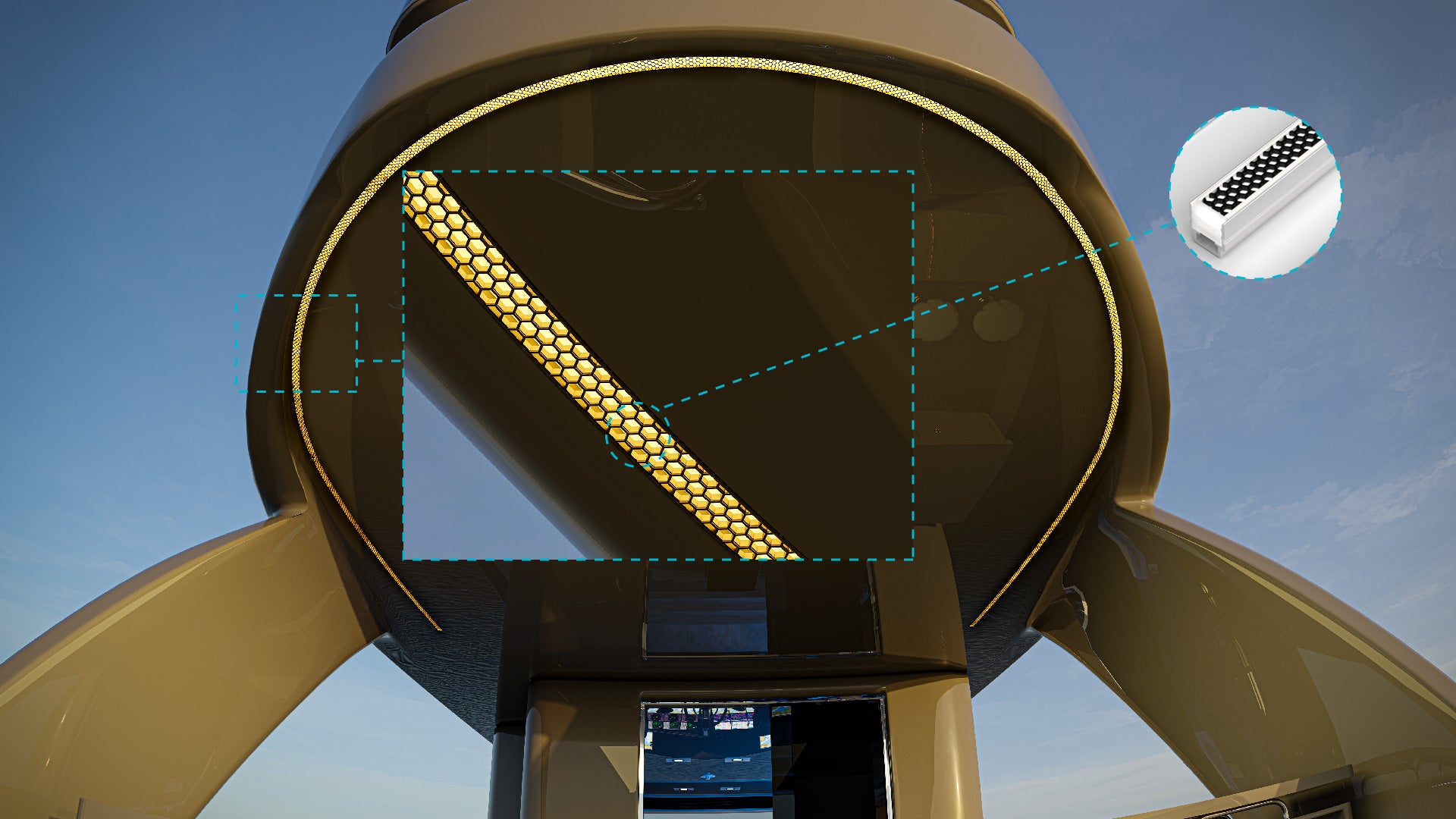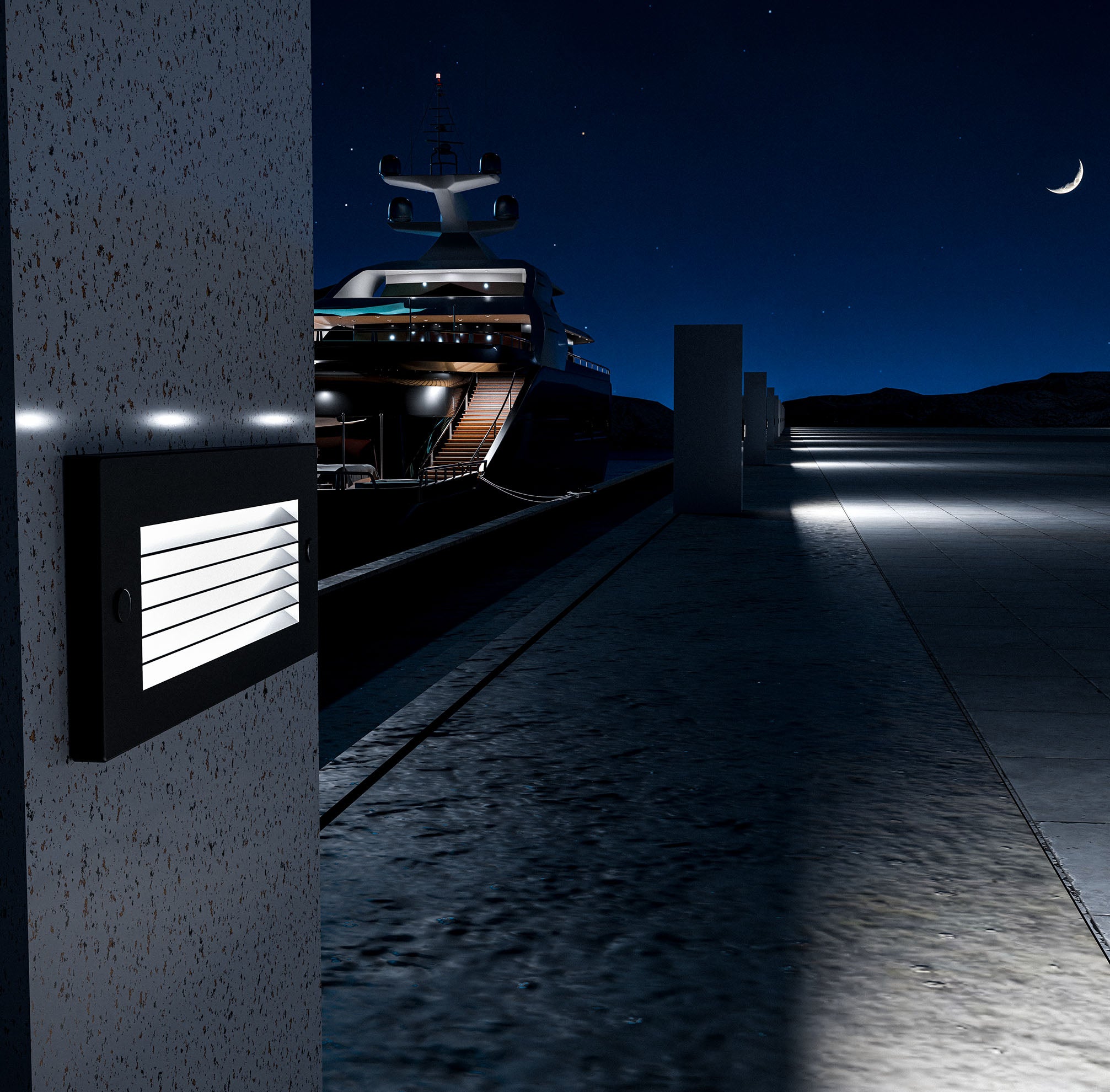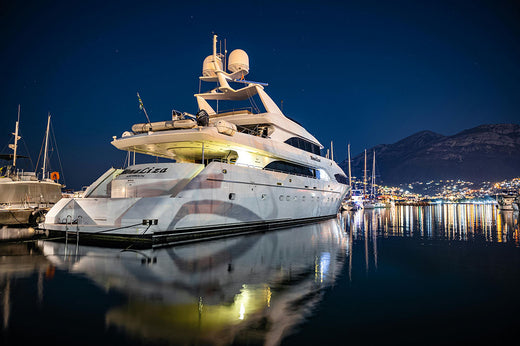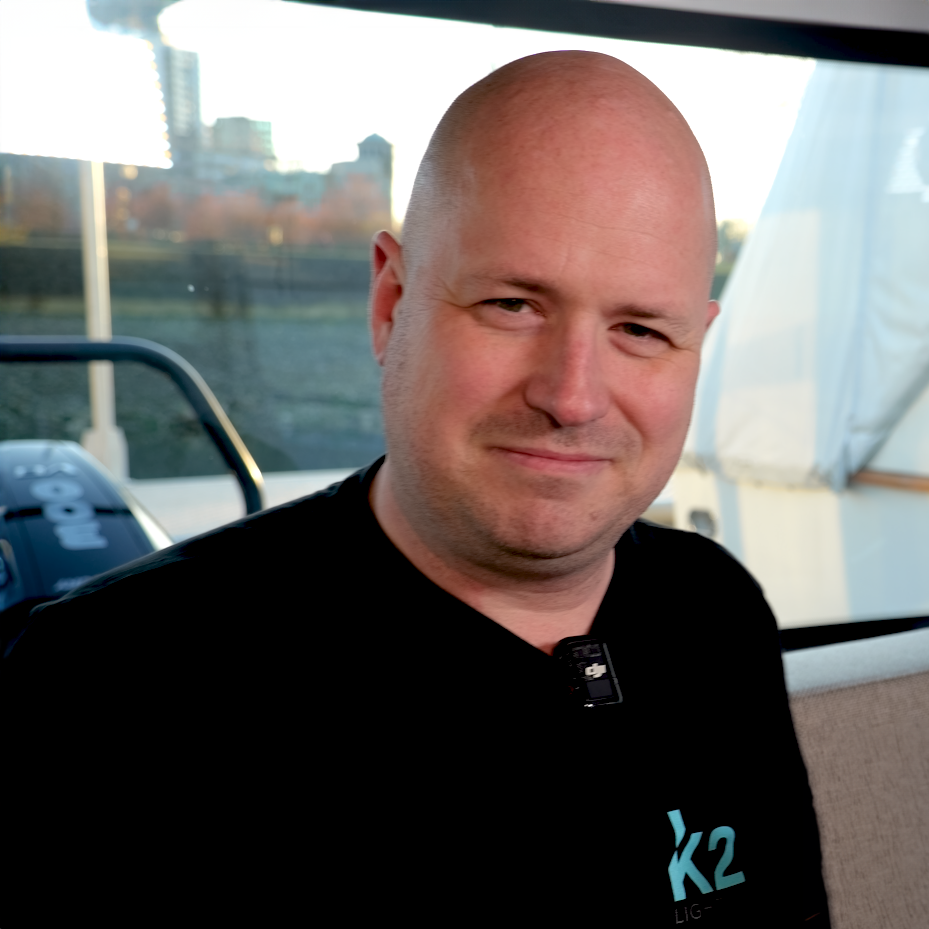Marine LED lights are vital in the maritime industry, providing essential illumination for navigation, safety, and operational efficiency. These lights are used on a wide range of vessels, from commercial ships and fishing boats to luxury yachts. Their energy efficiency, longevity, and low maintenance needs make them an ideal choice for maritime applications.
Unique Challenges and Requirements
However, marine environments present unique challenges that require specialized lighting solutions. Marine LED lights must withstand harsh conditions, including exposure to saltwater, extreme weather, and constant motion. This necessitates a focus on durability and reliability in their design and production.
Understanding Marine Environments
Harsh Conditions Faced by Marine Lighting
Marine lighting is subjected to some of the most demanding conditions imaginable. Saltwater corrosion is a significant concern, as it can rapidly degrade materials not specifically designed to resist it. Extreme weather conditions, such as high winds, heavy rain, and intense sunlight, further test the resilience of marine lights. Additionally, the constant motion of vessels means that marine lights must be robust enough to endure vibrations and impacts.
Importance of Durability and Reliability
Given these harsh conditions, durability and reliability are paramount for marine lighting solutions. Marine LED lights must be constructed from high-quality, corrosion-resistant materials and designed to remain operational under extreme conditions. Ensuring these lights can withstand the rigors of the marine environment is essential for maintaining safety and efficiency on the high seas.
Technological Advancements in Marine LED Lighting
Recent Technological Advancements
The field of LED lighting has seen significant advancements in recent years. Innovations such as improved LED chip efficiency, enhanced thermal management, and advanced optics have dramatically increased the performance and reliability of LED lights. These advancements have led to brighter, more efficient, and longer-lasting lighting solutions suitable for demanding marine environments.
Benefits for Marine Applications
LED lighting offers numerous benefits for marine applications:
- Energy Efficiency: LEDs consume significantly less power compared to traditional lighting, reducing the energy load on a vessel's electrical system.
- Longevity: High-quality marine LEDs have a much longer lifespan, often exceeding 50,000 hours of operation, which reduces the need for frequent replacements.
- Reduced Maintenance: The durability and reliability of LEDs mean less frequent maintenance and lower overall operational costs, which is crucial for vessels where access for repairs can be challenging.
Designing Marine LED Lights
Key Factors in Design
Designing marine LED lights requires careful consideration of several key factors:
- Waterproofing: Ensuring that lights are fully sealed against water ingress is critical to prevent damage from exposure to water and moisture.
- Anti-Corrosion Materials: Using materials that resist corrosion from saltwater and other harsh elements prolongs the life of the lights.
- Vibration Resistance: Marine LED lights must be built to withstand constant vibrations and impacts from the vessel's movement and operations.
Manufacturing Process
Manufacturing Marine LED Lights
The manufacturing process of marine LED lights involves several critical steps to ensure their durability and performance:
- Design and Prototyping: Engineers create detailed designs and prototypes, focusing on waterproofing, corrosion resistance, and vibration resilience.
- Material Selection: High-quality, corrosion-resistant materials are selected to withstand harsh marine environments.
- Assembly: Components are assembled in a controlled environment to ensure precision and minimize contamination.
- Sealing and Encapsulation: LED lights are sealed and encapsulated to prevent water ingress and protect against moisture and saltwater.
- Thermal Management: Advanced thermal management systems are integrated to dissipate heat and maintain optimal operating temperatures.
Quality Control Measures
To ensure product reliability and safety, rigorous quality control measures are implemented:
- Testing for Waterproofing: Each light undergoes thorough waterproof testing to confirm its resistance to water ingress.
- Corrosion Resistance Testing: Materials and finished products are tested for their ability to resist corrosion in saltwater environments.
- Vibration and Shock Testing: Lights are subjected to vibration and shock tests to ensure they can withstand the constant motion of marine vessels.
- Electrical Safety Testing: Electrical components are tested to meet safety standards and prevent failures.
Regulatory Standards and Certifications
Industry Standards and Certifications
Marine LED lighting must comply with various industry standards and certifications to ensure safety and performance:
- International Maritime Organization (IMO): Sets safety standards for marine equipment, including lighting.
- American Bureau of Shipping (ABS): Provides certification for marine lights to ensure they meet specific performance criteria.
- Lloyd’s Register (LR): Offers certification services to verify the quality and reliability of marine LED lights.
Importance of Compliance
Compliance with regulatory requirements is crucial for several reasons:
- Safety Assurance: Meeting industry standards ensures that marine LED lights are safe for use in harsh marine environments.
- Performance Reliability: Certifications verify that the lights perform reliably under extreme conditions, reducing the risk of failure.
- Market Acceptance: Compliance with recognized standards is often required for market access and acceptance within the maritime industry.
- Legal Liability: Adhering to regulatory standards minimizes legal risks and liabilities for manufacturers and operators.
Installation and Maintenance
Best Practices for Installing Marine LED Lights
- Proper Placement: Install lights in locations where they are protected from direct exposure to harsh elements but still provide adequate illumination.
- Secure Mounting: Use appropriate brackets and mounts designed to withstand vibrations and impacts. Ensure all fixtures are securely fastened.
- Wiring and Connections: Use marine-grade wiring and connectors to prevent corrosion and ensure a reliable electrical connection. Seal all connections to prevent water ingress.
- Compatibility Check: Ensure the LED lights are compatible with the vessel’s electrical system, including voltage and power requirements.
Tips for Maintaining and Extending Lifespan
- Regular Inspections: Conduct regular inspections to check for signs of wear, corrosion, and water ingress. Address any issues promptly.
- Cleaning: Clean the lights periodically to remove salt deposits and other debris. Use mild, non-abrasive cleaners and soft cloths.
- Protective Coatings: Apply protective coatings to prevent corrosion and extend the life of the lights.
- Routine Testing: Test the lights regularly to ensure they are functioning correctly. Replace any faulty components immediately.
- Environmental Considerations: Minimize exposure to harsh conditions when possible, such as covering lights when not in use.
Environmental and Economic Benefits
Environmental Advantages
- Reduced Carbon Footprint: LED lights consume significantly less energy compared to traditional lighting solutions, leading to lower greenhouse gas emissions.
- Energy Efficiency: High energy efficiency means that less power is required, reducing the demand on the vessel’s power systems and contributing to overall environmental sustainability.
- Longevity and Durability: The long lifespan of LED lights reduces the frequency of replacements, leading to less waste and lower environmental impact.
Economic Benefits
- Cost Savings on Energy: The energy efficiency of LED lights translates into lower energy consumption, reducing fuel costs for vessels.
- Reduced Maintenance Costs: The durability and longevity of LED lights mean fewer replacements and lower maintenance expenses over time.
- Extended Operational Life: With fewer interruptions for maintenance and replacements, vessels can operate more efficiently, improving overall productivity.
- Increased Safety: Reliable and effective lighting enhances safety on board, potentially reducing the costs associated with accidents and downtime.
By adopting marine LED lighting, maritime operators can achieve significant environmental and economic benefits, ensuring a more sustainable and cost-effective operation.
Future Trends in Marine LED Lighting
Predicting Future Developments
-
Smart Lighting Systems
- The integration of smart technology with LED lighting is anticipated to revolutionize marine lighting. Smart systems will allow for remote control and monitoring of lighting, enabling operators to adjust illumination levels and diagnose issues in real-time, further enhancing efficiency and safety.
-
Advanced Materials
- The development of new materials with even greater resistance to corrosion and wear will extend the lifespan and reliability of marine LED lights. Innovations in nanotechnology and coatings are expected to play a significant role in this advancement.
-
Enhanced Energy Efficiency
- Continuous improvements in LED chip technology will result in even higher energy efficiency. This will reduce the power demands of marine vessels, contributing to lower operational costs and a smaller environmental footprint.
Potential Innovations and Their Impact
-
Adaptive Lighting Solutions
- Future marine LED lighting systems may incorporate adaptive lighting technologies that automatically adjust brightness and color temperature based on environmental conditions and operational needs. This will optimize visibility and safety while minimizing energy use.
-
Integration with Renewable Energy Sources
- As renewable energy becomes more prevalent in the maritime industry, marine LED lights will be designed to seamlessly integrate with solar panels and other renewable energy sources. This will enhance the sustainability of maritime operations and reduce reliance on traditional fuels.
-
Robustness and Miniaturization
- Advances in LED technology will lead to more compact and robust lighting solutions that can be easily installed in tight and challenging spaces on marine vessels. This will expand the applications and versatility of LED lighting in the maritime industry.
By staying at the forefront of technological advancements and embracing innovative solutions, the maritime industry can continue to improve the efficiency, safety, and sustainability of its operations through the use of marine LED lighting.
The Importance of Tailored LED Technology for Marine Environments
Marine environments present unique challenges that require specialized lighting solutions. Tailored LED technology is essential for ensuring durability, reliability, and efficiency in these harsh conditions. By using materials that resist corrosion, designing lights to withstand constant motion and vibrations, and implementing advanced waterproofing techniques, marine LED lights provide unmatched performance and longevity.
Final Thoughts on the Ongoing Evolution of Marine LED Lighting
The marine LED lighting industry continues to evolve with advancements in technology, materials, and design. Innovations such as smart lighting systems, enhanced energy efficiency, and adaptive lighting solutions are shaping the future of marine lighting. These developments not only improve the safety and operational efficiency of marine vessels but also contribute to environmental sustainability and economic benefits. As the industry progresses, the adoption of cutting-edge LED technologies will remain crucial for meeting the demanding needs of the maritime sector.
About K2 Lighting
Commitment to Quality and Innovation
K2 Lighting is dedicated to providing high-quality marine LED lighting solutions designed to meet the specific challenges of maritime environments. Our products are engineered with the latest technological advancements and built with robust materials to ensure maximum durability and performance. At K2 Lighting, we prioritize reliability, energy efficiency, and customer satisfaction, making us a trusted partner in the maritime industry.
To learn more about our range of marine LED lighting solutions or to discuss your specific requirements, please visit our website at K2 Lighting. You can also contact us directly at info@k2lighting.com or call us at 844-423-1213. Let K2 Lighting help you navigate the complexities of marine lighting with our innovative and reliable products.

